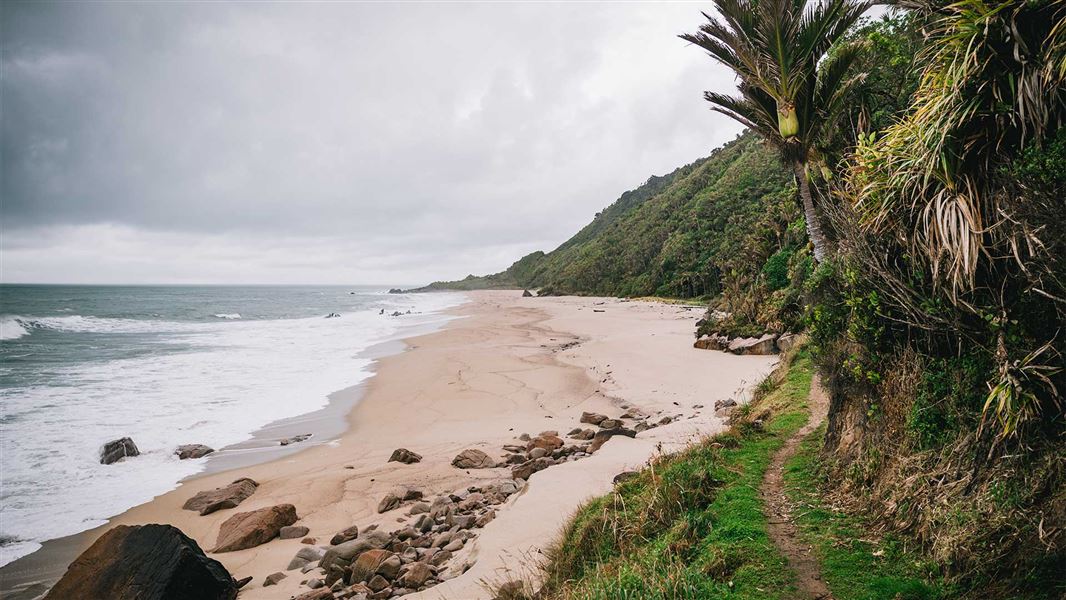
Located in Kahurangi National Park and Karamea area in the Nelson/Tasman and West Coast regions
Introduction
Travel through expansive tussock downs, lush forests and nīkau palms to the roaring seas of the West Coast. Mountain bikes are allowed between 1 May and 30 November.Bookings for the 2025/26 season open at 9.30 am on Thursday 15 May 2025.
Stay safe in the outdoors
- Choose the right trip for you. Learn about the route and make sure you have the skills for it.
- Understand the weather. Check weather forecasts.
- Pack warm clothes and extra food. Check gear lists.
- Share your plans and take ways to get help. Share directly or use the Outdoor Intentions form or Plan My Walk. Take a distress beacon.
- Take care of yourself and each other.